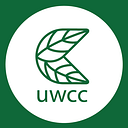The Impact of Indigenous Views on Conservation Efforts in Canada
By: Jacqueline Omdara
June is Indigenous History Month, a month dedicated to commemorating the history of First Nations, Inuit, and Métis peoples in Canada. It is a time for all Canadians to recognize their history, heritage, sacrifices, contributions, and amazing culture. However, as we do so, we must be mindful that First Nations, Inuit, and Métis peoples each have unique histories and traditions that are also distinguishable within each group.
It is important to reflect on our past so that we may move forward with compassion and seek justice for our mistakes. There were over 140 residential schools that operated from the late 1800s until quite recently in 1996. Indigenous children were taken away from their families and forced to assimilate in which they had no freedom to practice their language, traditions, and cultural practices. More evidence of the horrific practices and unethical treatment of Indigenous children has come to light in this time of remembrance. During the month of June, 215 unmarked graves were discovered in Kamloops, British Columbia residential school, and approximately 751 unmarked graves in Saskatchewan at Marieval Indian Residential School. As we take this time to reflect on the bravery and resiliency of Indigenous peoples as well as the loss they have suffered, there is much hope in working together to care for the Earth and the gifts she provides.
An admirable trait of First Nations, Inuit, and Métis peoples is that they show great appreciation and respect for Mother Earth as well as for all the animals, plants, and forms of life that inhabit her. Indigenous peoples see themselves as caretakers of Mother Earth as she gifts us water, air, and fire. Practices and the spiritual connection Indigenous peoples have with Mother Earth extends back thousands of years in which hunting, gathering, harvesting foods for community members and for ceremonial purposes is based on the idea that only what is needed is taken. Everything that is taken is used and not wasted as the awareness extends to care for the many future generations proceeding them.
The Great Bear Rainforest and British Columbia’s Dasiqox Tribal Park are just some outstanding conservation efforts led by Indigenous peoples. Canadians are starting to shift in the way they practice and view conservation. In a recent federal budget, Canada’s Prime Minister Justin Trudeau, committed $1.3 billion to support and encourage Indigenous participation in the conservation of protected areas in Canada. Indigenous Leadership Initiative is committed to ‘support Indigenous Nations in honouring cultural responsibly in caring for the land and waters.’ Check out their website!
Carol Linnitt from The Narwhal spoke with the director of Indigenous Leadership Initiative, Valérie Courtois, who shared his thoughts about Canada’s shift in recognizing the value of Indigenous-led conservation efforts and the progress that is being made. The most recent increase in funds to protect land in Canada is great evidence of the changing tide. It is the beginning of the reconciliation process in renewing the relationship between crown governments and Indigenous peoples. However, a significant obstacle is finding a parallel in Indigenous science and western science to aid in the direction of conservation. In the past, conservation organizations have greatly influenced decisions based on their own values on land that isn’t theirs. Courtois describes it as another form of colonialism. To prevent such things from happening again, First Nations have developed partnership protocols and look for the right partners that will respect the First Nations land.
This is only the beginning of Indigenous-led efforts, there is much to look forward to as the voices of the Indigenous communities are being heard and decisions are being made. Canada’s shift in mindset in initiatives to save the Earth has Courtois hinting at the fulfillment of the eighth fire prophecy. The prophecy is about how Indigenous people will rise up from the oppression of colonialism from the last 200+ years and become the land carers and leaders they were meant to be.
To honour the thousands of Indigenous children forced into residential schools and to recognize the strength and resiliency of the survivors, join us in wearing orange on July 1st. I encourage you to also reach out to me if you are interested and/or knowledgeable in these topics as I am continually learning and educating myself in hopes of creating discussions around these important topics! If you are interested in further reading about the topic this blog has covered, feel free to check out this website!
References
Borrelli, M. (2021, June 25). ‘I was speechless’: Windsor granddaughter of Indigenous residential school survivor wants action. Windsor. https://windsor.ctvnews.ca/i-was-speechless-windsor-granddaughter-of-indigenous-residential-school-survivor-wants-action-1.5485654.
Joseph, B. (n.d.). National Indigenous History Month — Why it’s important. Indigenous Corporate Training Inc. https://www.ictinc.ca/blog/national-indigenous-history-month.
The Narwhal. (2021, June 24). How Indigenous Peoples Are Changing the Way Canada Thinks About Conservation. The Narwhal. https://thenarwhal.ca/how-indigenous-peoples-are-changing-way-canada-thinks-about-conservation/.
Turner, A. (n.d.). Honouring Earth. Assembly of First Nations. http://www.afn.ca/honoring-earth/.
